The Soviet 91/30 PU – Sniper Rifle of the Red Star
Words
and pictures by Mick Toal
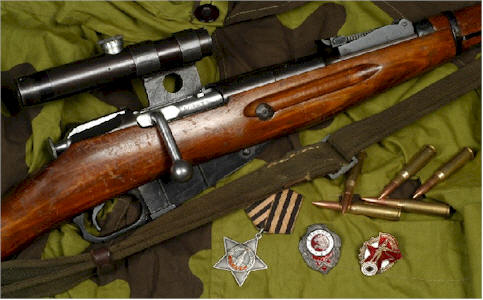
For
many military longarms collectors, a sniper rifle is the ultimate
acquisition. However, such rarity and precision comes at a cost, and,
should a sniper rifle ever be found on the market, the price generally
precludes any impulse buys. But don’t despair, there are still a few
sniping weapons with very colourful histories out there for an
accessible price, and, whatsmore, they are also great fun and cheap to
shoot – the Soviet 91/30 PU. Perhaps best known the world over as the
non-speaking star of that Hollywood interpretation of the
Battle of Stalingrad – Enemy at the Gates – the
91/30 PU was made in greater numbers than any other sniper rifle in
history. But that’s not to say they are common, or uninteresting –
entering service with Russia late in 1942, the 91/30 PU remained in
Soviet service until at least the early 1970s, the rifles took part in
all the pivotal Cold War conflicts of the latter half of the last
century - including the Middle East, Korea and Vietnam – and they were
manufactured post-war by Poland, Hungary and Czechoslovakia. Although
originally designed to help repel the hated German invader from Mother
Russia’s soil in the darkest days of World War II, these weapons were
later wielded by enemies of the Aussie Digger and US ground forces, who
encountered and captured more than a few examples in Korea and during
the Vietnam conflict.
FIRST A BIT OF HISTORY
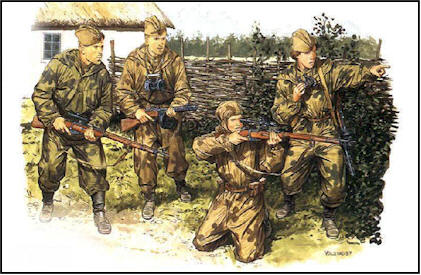
The
longest continuously serving military rifle in history, the
Mosin-Nagant was adopted by Imperial Russia in 1891 as the M1891,
better known in the West as the Model 91. It takes its name from the
designers of the combined major components – Russian Army
Captain Sergei Ivanovich Mosin, and Belgian weapons designer
Leon Nagant, who developed the magazine and feeding system. From this
original “cavalry stopper” long arm chambered in the 7.62x54 Russian
cartridge – which more resembles a pike when its cruciform bayonet is
attached – grew a family of basic but effective rifles and carbines
manufactured by several nations (including France, Finland and the
United States) which are still in limited mainstream service throughout
the world today.
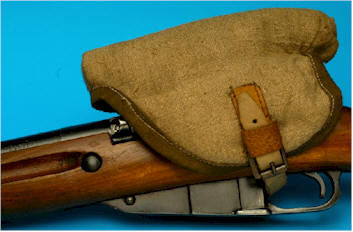
The
91/30PU sniper rifle is an adaptation of the 91/30 rifle, which, as the
nomenclature suggests, is a 1930 upgrade of the Model 91. Although the
functional and robust bolt and magazine remained essentially unchanged,
the 91/30 was fitted with an upper hand guard, reinforced sling slots
replaced the original swivels, and the rear sight was re-calibrated
from Arshins (basically an infantryman’s pace measuring 0.71 metres
(0.78 yards) to metres, with a maximum range of 2000 metres. The barrel
length was reduced from 790mm (31.6 inches) to 717.5mm (28.7 inches),
reducing the overall length of the rifle from 1284mm (51.37 inches)
to1213mm (48.5 inches), the original unprotected blade foresight was
replaced with a windage-adjustable hooded post and the barrel bands –
originally tightened into position by integral screws - were replaced
by simple metal bands held in place by spring fasteners in the
stock.Manufactured at the Tula and Iszevsk arsenals, the first 91/30
rifles had hexagonal receivers with “low walls” - a scallop cut out of
the left side in the interests of saving weight.
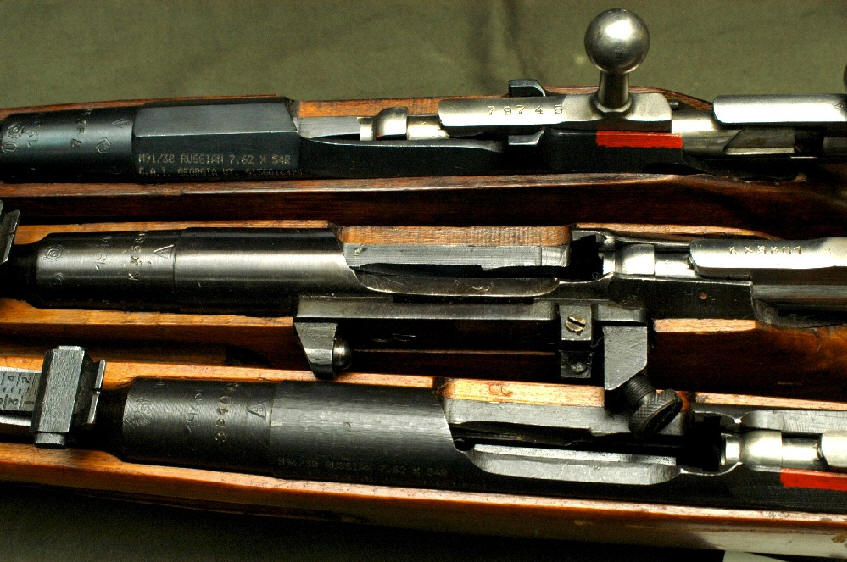
Later
in the decade round receivers started to appear, and during World War
II production was further simplified with the introduction of the plain
“high wall”, without the cut out, on which all PU sniper rifles are
based.
BORN IN BATTLE
Unlike
the other belligerents, Soviet Russia had a well established sniper
rifle manufacturing and training program in place when Germany forced
its entry into World War II with the launch of Operation Barbarossa
invasion in 1941.Based on the low wall 91/30 rifle with a hexagonal and
round receivers, there were at least three sniper rifles using
different chamber and bolt body scope mounts. Ironically, the Soviets
received the bulk of their sniping expertise from military exchanges
with the fledgling Nazi regime in the 1930s, and the PE and PEM 4-power
scopes mounted on the first 91/30 sniper rifles was a direct copy of a
design by the famed German optical manufacturer Zeiss. However, as fine
as these earlier Soviet sniper rifles were – to the point they were
prized items often pressed into service when captured by the German
invaders, who often had to rely on civilian target and hunting rifles
pressed into service as sniping weapons – Russia could not produce them
in the quantities demanded by a massively expanded military, fighting
with its backs to the wall against a professional and determined
enemy.
Thus
in 1942 work began on a sniper rifle that could be mass produced.
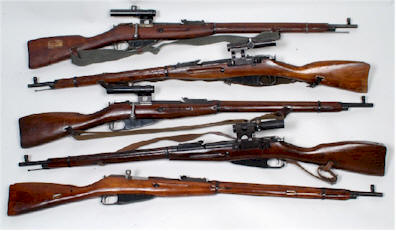
Although
in widespread use by the Soviets during the early days of Operation
Barabarossa, production of the 91/30 sniper rifles had been halted in
favour of the manufacture of the self-loading SVT 40 “Tokarev” sniper
rifles mounting a lighter, and far simpler, 3.5-power “PU” telescopic
sight. However, the self loading rifles had accuracy problems that were
never resolved, and in 1942 the Soviets turned their attention to
developing what would ultimately become the most widely manufactured
and longest serving sniper rifle in history – the 91/30 PU, which
mounted a simplified variant of the telescopic sight developed for the
SVT 40.
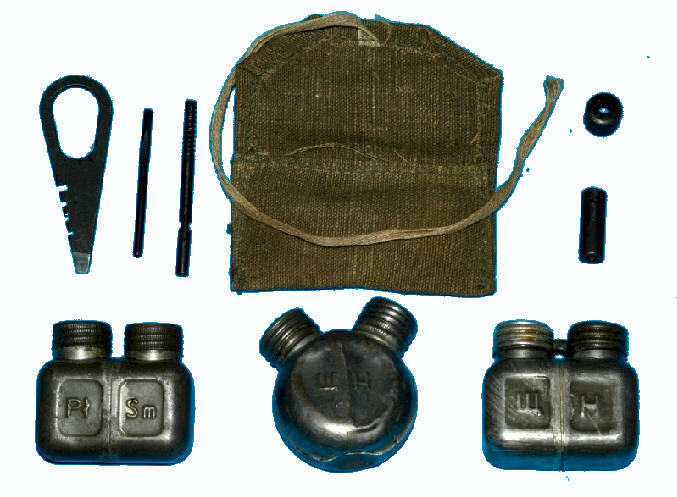
The
first examples of the 91/30 PU were churned out from the production
lines in Tula and Iszevsk late in 1942, and the weapons remained the
frontline sniper rifles for the now-defunct Eastern Communist Bloc
until they were superseded by the infamous self-loading SVD Dragunov -
which is chambered for the same calibre, and remains in service - in
1962.
THE 91/30 PU SNIPER RIFLE
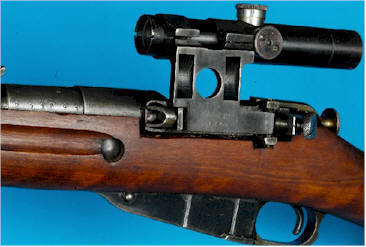
Without
exception, all 91/30 PU sniper rifles are based on “high wall” round
receivers. The bulk were based on actions manufactured in1942-1944,
with a very few were made from 1945-1947, and some as late as 1958.
Poland and East Germany refurbished Russian-made examples until at
least the late 1960s, and Hungary manufactured its own version of the
91/30 PU – known as the M/52 – from at least 1952-1954. The Czechs also
produced a sniper rifle similar to the 91/30 PU concept – the VZ54/57
– which had a different stock, scope mount and a
Czech-designed 2.5 power telescopic sight. Compared with the PUs, these
rifles are extremely rare. As with all Communist Bloc weaponry of the
Cold War era, 91/30 PU sniper rifles were delivered in substantial
numbers as military aid to bolster Communist causes in the Middle East,
Vietnam, Cuba, Afghanistan and Korea. 91/30 PU sniper rifles were
captured from Chinese and North Korean troops during the Korean War,
and Hungarian-manufactured examples in particular were encountered in
Vietnam.
Due to
the secretive nature of the Soviets during the Cold War era, the
subsequent manufacture, and re-manufacture of the weapons by numerous
satellite states, and the chaotic state of the former USSR since the
Iron Curtain finally came down, definitive manufacturing figures for
91/30 PU sniper rifles are hard to come by. According to German author
and respected Mosin Nagant rifle authority Karl-Heinz Wrobel, the
Iszevsk arsenal produced 53,195 91/30 PU sniper rifles in 1942, and a
total of 275,250 when manufacture ended in 1958, when 100 PU rifles
were made. A small batch of 50 was apparently manufactured in 1948, and
one 1947 example is known to exist, which is in Wrobel’s collection.
Numbers made at Tula, which only manufactured PU rifles in 1943 and
1944, are not known, although rifles from this arsenal are without a
doubt much rarer than Iszevsk examples. Hungary only apparently
manufactured 91/30 rifles from 1951-54, and the author has only
encountered M/52 sniper variants dated from 1952 onwards, with the
highest serial number recorded being 7700, which could be a reliable
indicator of the number of the weapons produced.
RECOGNIZING
A PU SNIPER RIFLE
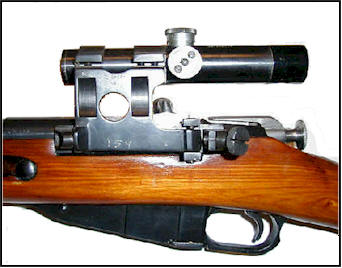
As
with the war-time manufacture of the weapons of any nation, there is a
noticeable difference in the finish of 91/30s from the World War II
era, although later war examples of the 91/30 PUs are generally built
to more exacting standards than their standard issue counterparts. Some
years back quite a few PU scopes and mounts were sold in Australia and
the US, and standard 91/30 rifles fitted with these optical sights and
a modified bent handle may be encountered, along with a host of
counterfeits manufactured in past decades. Due to the huge variations
in the manufacture and refurbishment processes of the genuine rifles,
some fakes are hard to pick, but many are obvious.
It is
not unknown for 91/30 PU rifles to be fitted with post war-manufactured
scopes and mounts – some dated in the late 1960s – during arsenal
refurbishment.
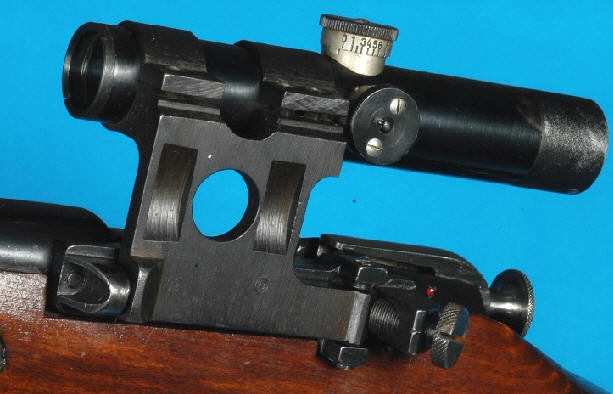
Some
recognition rules of thumb for authentication are a finer, almost
polished, finish on the receiver, a crisper and lighter trigger pull,
and wear of the scope and mount which matches the rest of the weapon.
Many of the Russian-manufactured PU sniper rifles have a number with at
least seven digits stamped into the left side of the chamber just above
the wood line. The significance of this number is obscure – some
collectors suggest it’s the rifle’s original scope number, others a
manufacturing batch number – but examples of former 91/30 sniper rifles
which have been converted back to standard rifles invariably have this
number ground off or crossed out by the arsenal during remanufacture.
Like the original serial number, this number is hard to fake, as it
often has Cyrillic letters.
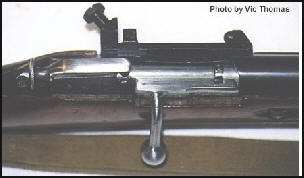
All PU
type sniper rifles are fitted with a two-piece “self centering” scope
mount. The base mount is attached to the left of the bolt body with two
screws, and set into a perpendicular position with two hefty locating
pins drilled into the left side of the receiver at either end of the
base mount. Once the mounting screws are tightened, they were each
concentrically drilled, and held in place by a locking screw. At the
front of the mount is a ball socket and at the rear is a locking screw
with knurled grip, and captive elevation adjustment screws, the lower
one of which was often punched into place after zeroing by an armourer.
Slid in from the rear, the scope is secured in the one-piece detachable
mount’s split rings by three screws – two in the rear band, and one in
the front. On the inner face of the detachable mount, which mates up
against the base mount, are two small ramps, which are ground down by
the armourer during factory zeroing to adjust the windage (this is
important, as the post of the PU scope wanders about within the field
of view during adjustment with the scope’s range and windage dials). To
fit the detachable mount to the base the main screw and upper elevation
adjustment screw are loosened, and they are tightened to secure the
mount into its factory zeroed position. Soldiers were forbidden from
detaching the scopes from the rifle, which remained the sole domain of
the armourer.
Many
Russian rifles and their optical sight components have been re-built
during their many years of service, and this is generally indicated by
a box with one or two diagonal crosses on the timber – which is
generally roughly finished with hand-brushed shellac - and many of the
metal components. It is common to encounter Russian PU rifles with what
is apparently a rifle serial number, scope number, or both, hand
engraved into the detachable scope mount, but it is also not unknown
for that component to be unmarked, apart from a non-descript
manufacturer’s stamp. These markings were probably applied according to
the policy of the unit the rifle was issued to, and is not an indicator
of any particular rifle or scope component manufacturer. It is not
uncommon for components from different arsenals to be used in the
manufacture, and re-building, of Russian PU rifles.
THE ISZEVSK 91/30 PU

By far
the most commonly encountered 91/30 PU sniper rifles were manufactured
at Izsevsk, and they are readily recognized by the arsenal’s hammer and
sickle within a wreath on top of the chamber, and a number with at
least seven digits and Cyrillic characters stamped into the left side
of the chamber. Iszevsk manufactured components - right down
to the barrel bands and butt plate - have a triangle with a fletched
arrow inside stamped into them.
THE
TULA 91/30 PU
Tula-manufactured
rifles are readily recognized by the distinctive five-pointed Soviet
star containing a fletched arrow stamped into the chamber. Like the
Iszevsk PUs, they often have a number stamped into the left
side of the chamber, but all types of Tula 91/30 sniper
rifles generally have Cyrillic letters resembling “C” and an
upside-down “U” – a marking which represents “Snayperskya Provernaya”,
which translates as “tested for use as a sniper”.
THE HUNGARIAN M/52

Hungarian
M/52 sniper rifles are the rarest examples of the PU family, and, since
standard Hungarian 91/30 rifles are even rarer than their scoped
cousins, the author is not aware of any counterfeit examples. They are
readily recognized by their higher standard of manufacture, a deeper
blue/black finish of all metal, and a profusion of “02” (apparently the
Eastern Bloc designation for Hungarian manufactured weaponry) stamps on
just about every component of the weapon - right down to the shaft of
the cleaning rod. Unlike their Russian cousins, the author has found no
evidence of any number being stamped on the left side of the chamber,
likewise the scope mount components – which also display finer
attention to detail during manufacture - are generally unmarked, save
for customary “02” stamps.
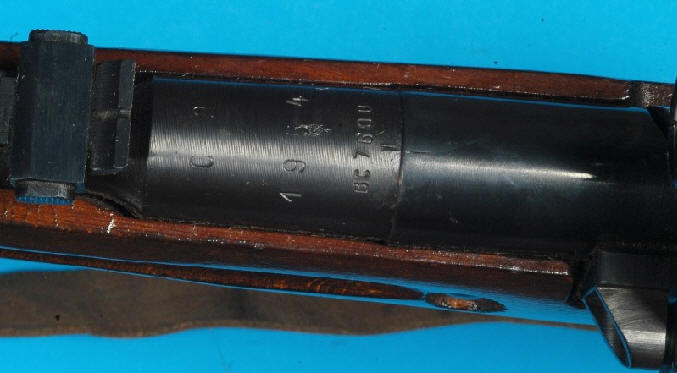
The
marking on the rifle’s chamber are utilitarian – an 02 above the year
of manufacture and then the serial number, which is generally two
letters followed by four digits. To date the author has only
encountered M/52 rifles with BC prefixes. Stocks of M/52 rifles
inspected by the author in Australia have the customary 02 marking on
the right side of the butt and are coated in a durable dark brown
finish. There is also evidence of “blonder’ – almost yellow – timber on
unissued rifles in collections in the United States. Like the Russian
rifles, the Hungarian stocks have a brass-reinforced “dog collar” sling
mount slots. M/52 rifles can be fitted with an all leather sling, or
webbing varieties in varying colours – again the 02 marking readily
denotes their origin. Hungarian scopes are identical to the Russian PU
optics except for the markings – on all examples seen by the author,
all markings are in white with the scope number being a “41”
(apparently an indication of Hungarian-manufactured optics, also seen
on military issue binoculars), above a four digit year of manufacture,
and then a serial. There is also another four digit number, indicating
the serial of the rifle the scope was issued with. Hungarian M/52
rifles have been encountered with Russian manufactured scopes or
mounts, but whether these came together in the various countries the
weapons were exported to as military aid during re-build programs, or
the components were fitted to rifles without optical sights by civilian
collectors can only be conjecture.
EX
PU SNIPER RIFLES
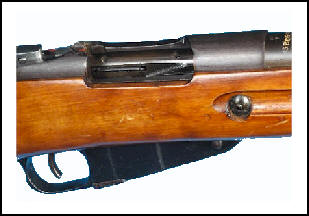
Perhaps
the most affordable, and common, examples of a PU sniper rifle for your
collection are the ones that have been arsenal re-finished and
re-issued as standard rifles. They are readily recognized by their
plugged scope mounting holes, which are often hard to spot from the
outside, but are obvious from inside the receiver once the bolt is
drawn back. Another sure giveaway is a crossed out number stamped into
the left side of the receiver – sometimes ground off - and the “C” and
inverted “U” found on Tula sniper rifles. Some former snipers will have
the cut out for the scope mount on the stock repaired, more often the
complete stock was replaced during re-building. Whether they were worn
out, or surplus to requirements, the author has been unable to
determine a reason these rifles were retired, but bore condition can
vary from well-worn to almost unfired. Like other 91/30 PU sniper
rifles, the exact number converted is not known, but they are far more
readily encountered than intact examples. From a batch of 100 91/30
rifles from varying eras recently imported into Australia by Lawrance
Ordnance in Sydney four retired PU sniper rifles – three Iszevsks and a
Tula – were found. One of these rifles, a 1943 Iszevsk with an
excellent bore and a re-numbered standard 91/30 Tula bolt, is now in
the author’s collection.
THE
PU SCOPE
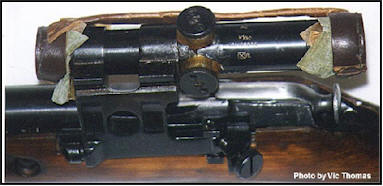
In
keeping with Soviet war time austerity, the PU scope is basic, but
robust and effective. With a magnification of 3.5-power and 169mm (6.7
inches) in length and weighing 270 grams (9.5 ounces), the PU is a
simple design with a European three post reticule. With the scope
fitted, all 91/30 PU rifles were issued with an roughly woven cloth
action shroud with a leather strap which passed through the trigger
guard, which doubled as a case for the scope when it was removed with
the detachable mount. Each rifle also had a set of leather scope caps,
although examples in East German service have been encountered with
plastic caps linked with black elastic cord.
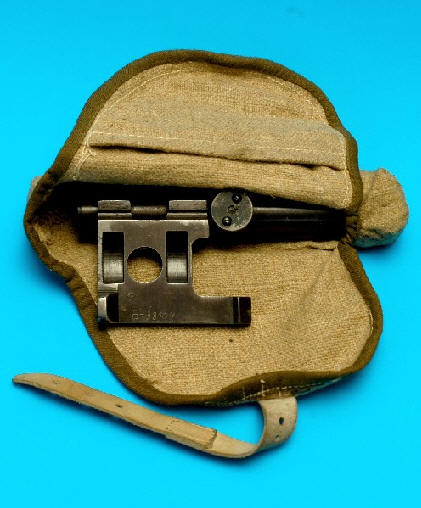
Like the
rifles, there are huge variations in the optical sights, with wartime
dated markings varying from the Soviet hammer and sickle in a pentagon,
through to later examples with just a serial number, and new and
refurbished scopes with multi-coated lens elements. The windage dial,
on the left of the scope is calibrated plus and minus to 10, and the
elevation dial is marked out to a (very optimistic) 1300 metres. As
with many European scopes of the era, the cross hair does not remain
centred, but shifts with adjustment. The PU scope has been adapted for
a variety of heavy weaponry, including 14.5 anti-aircraft guns and
12.7mm machine guns, and these can generally be recognized by extra
increments on the elevation dial – 91/30 scopes stop at 13, whereas
heavy macine gun scopes often go up to 22 - although they have an
identical three post reticule.
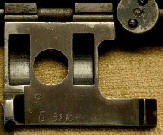
There is a
significant difference is the finish of war-era and post war mount
components – particularly on the inside of the detachable scope mount –
and many 50s-60s manufactured base mounts have a square fore end, as
opposed to the rounded corners found on war era examples.
A PU FOR YOUR COLLECTION
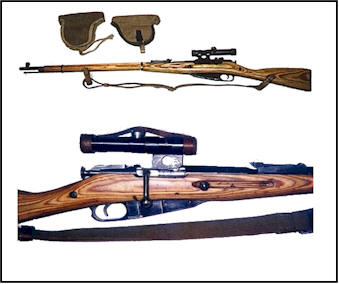
When
it comes to collecting firearms, items are often worth what the seller
is prepared to let it go for, and what the buyer is prepared to pay for
it. Like all sniper rifles, genuine 91/30PUs are not cheap – while
decent Russian 91/30s can still be found in store racks for as little
as US$100, expect to pay (at least) more than US$700 for a particularly
fine example of a PU. Although rarer, Hungarian M/52s don’t seem to be
as desirable to collectors as unrefurbished Russian war time examples,
although this could change. Retired sniper rifles can bring a higher
price, but more often than not you will encounter one being sold as a
standard 91/30. But when you compare the price of the former communist
rifles with the price of their contemporaries such as the British and
Canadian No 4 (T) .303 and the Holy Grail of any Australian collector,
a Lithgow Mk No 1 MkIII* HT – of which only 1612 were made – a PU could
be just the starting point for your collection of sniper rifles, and a
great conversation piece with a long and colourful history.
The
author would like to thank Simon Lawrance of Lawrance
Ordnance, Anthony Miller and Svetlana Dachanova of the
Commemorative History Society in Australia and Sydney collector Michael
Melliar-Phelps for their assistance in compiling this article.
|

